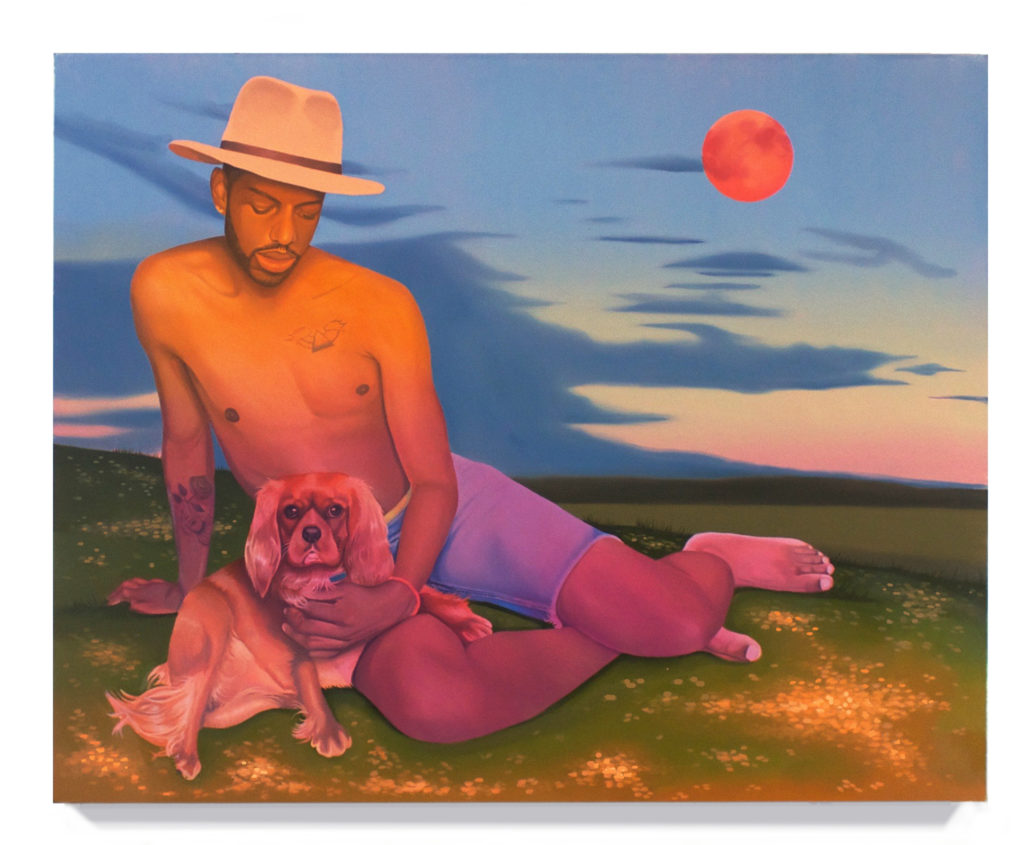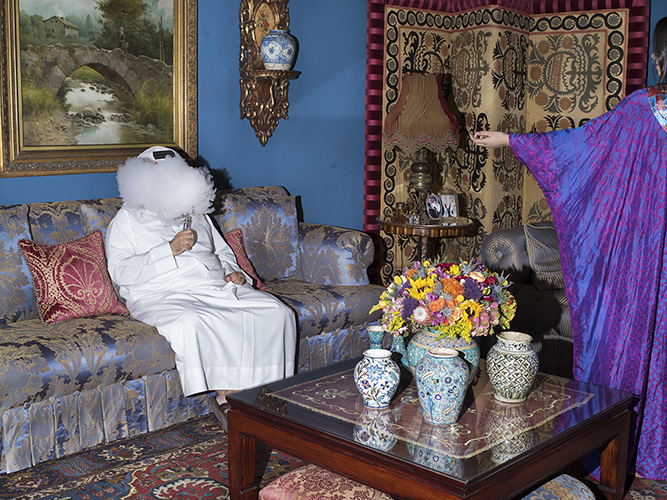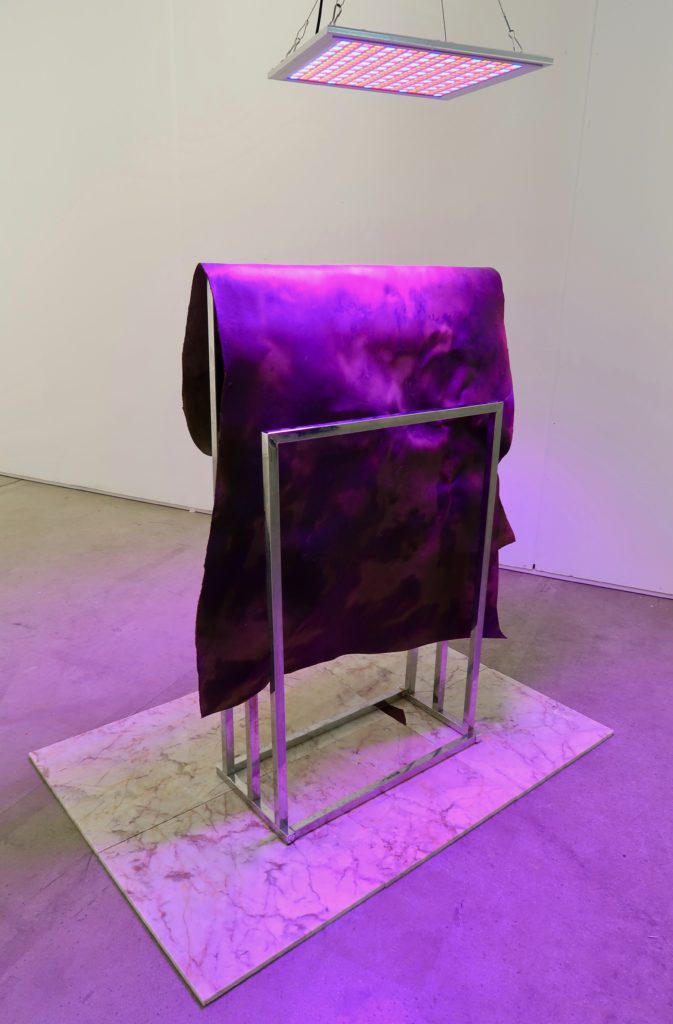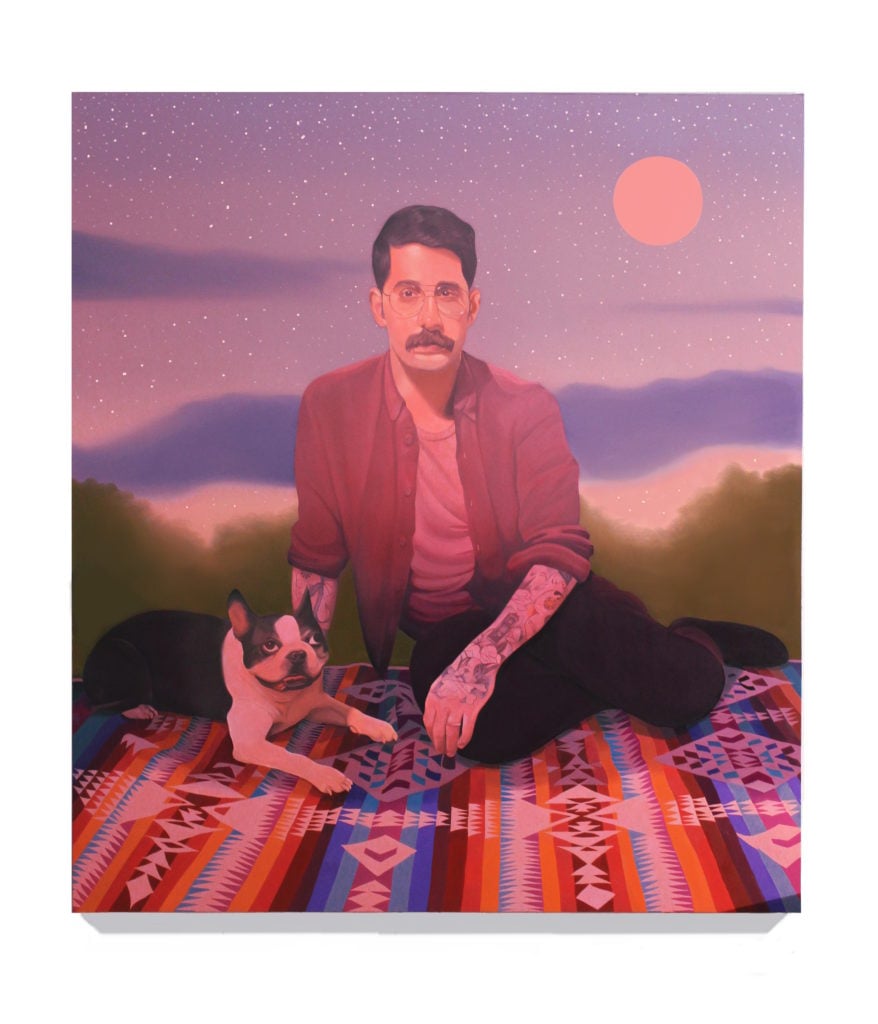Art World
6 Emerging Artists Worth Discovering at NADA New York 2018
A not-to-miss list from the seventh edition of the fair.

A not-to-miss list from the seventh edition of the fair.

Taylor Dafoe

NADA may not be the biggest or flashiest fair taking place during Armory Week, but it’s certainly not being held back by a shortage of compelling talent. This seventh edition of the fair, which opened today in its new home at the Skylight Clarkson Square building in Soho, has plenty to offer—from thoughtful political projects and conceptual photographs to big, beautiful paintings and flashy Instagram fodder. Not every name on the walls is recognizable, but several of the artists are on their way to bigger things.
Here are six young rising artists to check out at the fair.

Farah Al Qasimi, Living Room Vape (2016). Courtesy of Helena Anrather.
A generic jungle scene is painted on the back wall of Helena Anrather’s booth, which serves as background for a handful of fantastic photographs by Emirati artist Farah Al Qasimi. Qasimi’s pictures explore privilege, gender dynamics, and how objects shape identity in her home country. In one photo, a seated man in a white thawb blows a cloud of vape smoke, blocking his face from the viewer while the hand of an out-of-frame female reaches out to him. In another, a black cat gnaws at an unidentifiable gold object in front of a storefront of ornate furniture. Qasimi’s photographs amount to more than depictions of life in the UAE, though. They’re visually complex, the picture plane crowded with information. They often feature subtle nods to Classical portraiture and other art historical tropes. On the opening day of the fair, Qasimi also presented her live performance piece HOW I LEARNED TO STOP WORRYING AND LOVE MY ROOM, in which she assumes the role of a teenage girl and sings a long list of complaints to the tune of a punk song. Today, Qasimi was named as the recipient of the 2018 NADA Artadia Award for her work at the fair.

Rindon Johnson, I just want to slice you open and bathe in your warm blood, can you pass me a towel? (2018). Courtesy of AA/LA.
Leather is an important element of Rindon Johnson’s work. Each of the works in AA/LA’s NADA booth features leather in some capacity, whether on canvas stretchers in their wall-hung works, or integrated with metal and marble in their sculptures. Johnson takes leather pieces, then treats them with handmade dyes and other natural materials such as ebonizer, Vaseline, and coffee, and lays them out in the sun to dry. The artist is interested in leather not as a fabric for fine clothing, but as an object laden with a rich history of use by humans, including as a bi-product of the meat industry.

Danny Ferrell, Pacifico (2018). Courtesy of Galerie Pact.
Using a palette of colors culled from a sunset, Pittsburgh-based artist Danny Ferrell paints sensual portraits of men, dogs, and men with dogs. He depicts his subjects with a graphic sensibility that recalls Alex Katz, and has an eye for details in clothes, body art, and brand logos that brings to mind Kehinde Wiley. Others seem to see their potential too: The majority of Ferrell’s paintings sold by the end of the fair’s first day.

Zach Nader, custody battle (2018). Courtesy of Microscope Gallery.
Microscope has devoted its booth to the work of Zach Nader, a digital artist interested in the shifting landscape of image production. His series of new works at NADA are done in three layers. Nader first etches drawings on panels, then paints atop them with acrylic, and prints photographic imagery on top of that. From afar, these works look distinctly digital, as if they were done in Photoshop, akin to Petra Cortright’s digital paintings. Up close, the physical labor behind the busy compositions becomes clear.

Fabrizio Arrieta, El Sr Bucle (2018). Courtesy of Diablo Rossa.
At first glance, the work of Costa Rican artist Fabrizio Arrieta may look like casual recreations of late Picasso paintings. And indeed his work does contain some of the same formal techniques the towering Spanish painter pioneered in his efforts to distort or disrupt the picture plane. But on closer inspection, it’s clear that his cut-and-paste collages have nothing to do with homage. Instead, Arrieta is interested in undercutting the power we give to the kinds of portraits or scenes you’d see in a dated art history textbook or fashion magazine. He appropriates found imagery to recapture its narrative, modifying it to surreal or funny effect.

Mariah Dekkenga, untitled (2013). Courtesy of Situations.
Most paintings worth their salt are much more dynamic in person than in jpeg form. That’s especially true for the work of Mariah Dekkenga, who uses molding paste to create texturized wave-like foundations on the base of her canvases, echoing the undulating forms painted on top of them. Looking at them in person, one has the urge to reach out and run a hand down their surface. Dekkenga, who splits her time between Qatar and Vermont, also has work up at the gallery now, in a colorful two-person show with sculptor Ioanna Pantazopoulou.